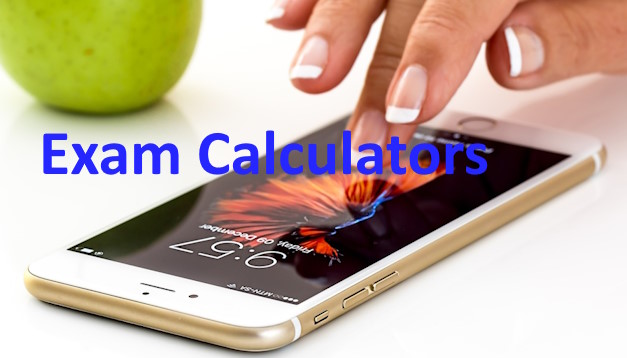Exam Calculators: Guidelines and Approved Models
Calculators are essential tools for many exams, especially in subjects such as mathematics, physics, chemistry, and engineering. However, the use of calculators in exams is often regulated to ensure fairness and academic integrity. This article provides an overview of the guidelines for calculator use in exams, including a table of approved models commonly accepted by educational institutions.
Guidelines for Calculator Use in Exams
- Exam-Specific Policies:
- Different exams and institutions may have specific policies regarding calculator use.
- Always check the specific guidelines provided by the exam organizer or educational institution.
- Permitted Features:
- Basic arithmetic operations: Addition, subtraction, multiplication, division.
- Scientific functions: Trigonometric, logarithmic, and exponential functions.
- Graphing capabilities (for certain exams).
- Prohibited Features:
- Programmable calculators: Those that can store text or programs.
- Calculators with internet or communication capabilities.
- Calculators with symbolic algebra systems (CAS).
- Inspection and Approval:
- Calculators may be inspected before the exam to ensure compliance.
- Some exams require calculators to be approved in advance.
Approved Calculators for Exams
| Brand | Model | Features | Prohibited Features |
|---|---|---|---|
| Texas Instruments | TI-30X IIS | Basic scientific functions | No programming, no CAS, no communication capabilities |
| Casio | FX-115ES PLUS | Scientific functions, fraction calculations | No programming, no CAS, no communication capabilities |
| Sharp | EL-W516XBSL | Scientific functions, equation solver | No programming, no CAS, no communication capabilities |
| Hewlett-Packard | HP 35s | Scientific functions, RPN and algebraic entry | No CAS, no communication capabilities |
| Texas Instruments | TI-84 Plus (for certain exams) | Graphing functions, basic programming (limited use) | No CAS, no communication capabilities (for specific exams only) |
Important Considerations
- Exam-Specific Approved Lists:
- Some standardized tests, such as the SAT, ACT, and AP exams, have their own lists of approved calculators. Always refer to these lists to ensure compliance.
- Battery Life:
- Ensure your calculator has fresh batteries or is fully charged before the exam to avoid interruptions.
- Familiarity:
- Use the calculator you are familiar with during the exam to maximize efficiency and accuracy.
- Back-Up Calculator:
- If permitted, consider bringing a back-up calculator in case of malfunction.
Calculators Effectively in Exams
- Practice:
- Practice solving problems using the calculator you will use in the exam. Familiarize yourself with its functions and layout.
- Check Work:
- Use the calculator to verify your answers, especially for complex calculations.
- Time Management:
- Use the calculator efficiently to save time, but don’t rely solely on it. Ensure you understand the underlying concepts.
- Understand Limitations:
- Recognize the limitations of your calculator and know when it is more efficient to solve problems manually.
Conclusion
Calculators are valuable tools in exams, but their use is subject to specific guidelines to maintain fairness. By understanding these guidelines and selecting an approved model, students can enhance their exam performance while adhering to regulations. Always refer to the specific requirements of your exam to ensure compliance and maximize the benefits of using a calculator.
References
- College Board SAT Calculator Policy: SAT Calculator Policy
- ACT Calculator Policy: ACT Calculator Policy
- AP Exam Calculator Policy: AP Calculator Policy
By following these guidelines, students can ensure they are well-prepared and compliant with exam policies regarding calculator use.



